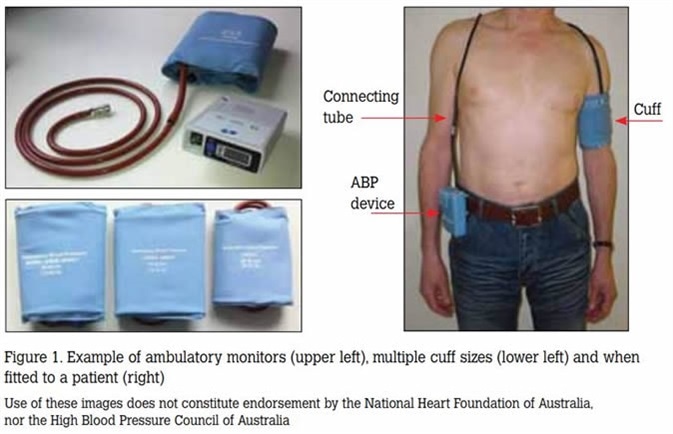Site Under Development, Content Population and SEO, Soft Launch 1st January 2020
Ambulatory Blood Pressure Monitoring (ABPM) is a diagnostic test to determine the presence of hypertension by taking measurements during normal daily activities, over a span of 24 consecutive hours. It helps to diagnose as well as monitor high blood pressure, usually defined as a systolic pressure of 140 mm Hg or more and a diastolic pressure of 90 mm Hg or more.
The instrument used is a portable blood pressure machine worn as a belt, with the cuff being attached around the upper arm. All types of daily activities, including sleep, may be normally carried out while wearing this device.

During the ABPM, regular blood pressure readings are taken, for several reasons:
The ABPM monitor is attached at the outpatient clinic. A digital monitor is used in the same way as in any clinic, by a cuff which inflates and then slowly deflates. Readings are taken at about every 15-30 minutes throughout the day and every half-hour to one hour at night. The cuff is worn throughout the period, with the machine being kept under the pillow or besides the patient on the bed during sleep.
The patient undergoing the measurement must not change the normal routine to enable a more accurate picture of how the blood pressure changes with various phases of daily activity. However, the machine, being electronic, cannot tolerate wet conditions, and therefore swimming, bathing or showering must be avoided for the day.
The machine has the ability to store all the readings which are analyzed once it is removed and taken back to the clinic or hospital. When a reading is about to be taken, the machine utters a warning beep. At this point, a few things should be done:
Some individuals feel uncomfortable with ABPM and their readings may therefore be unreliable as it reflects this emotional reaction. Such feelings should therefore be communicated to the doctor as this test may fail to be of value for these individuals.
ABPM is also useful in:
By giving an accurate picture of a patient’s blood pressure throughout the day and during sleep, it can prevent unnecessary prescribing of hypertension-reducing drugs for white coat hypertension. It also helps patients with masked hypertension to receive required treatment. It reduces the risk of stroke, heart disease, and organ damage caused by hypertension, and also shows how well a person responds to a long-acting antihypertensive drug.
Some patients do not tolerate the repeated cuff inflation well, and complain of soreness of the upper arm. Others feel tense or are distracted from their work by the regular taking of measurements. Sometimes skin irritation or even a slight reddening may occur.